
EYES ON THE PRIZE
EYES ON THE PRIZE
leader ZEBRa JERSEYS
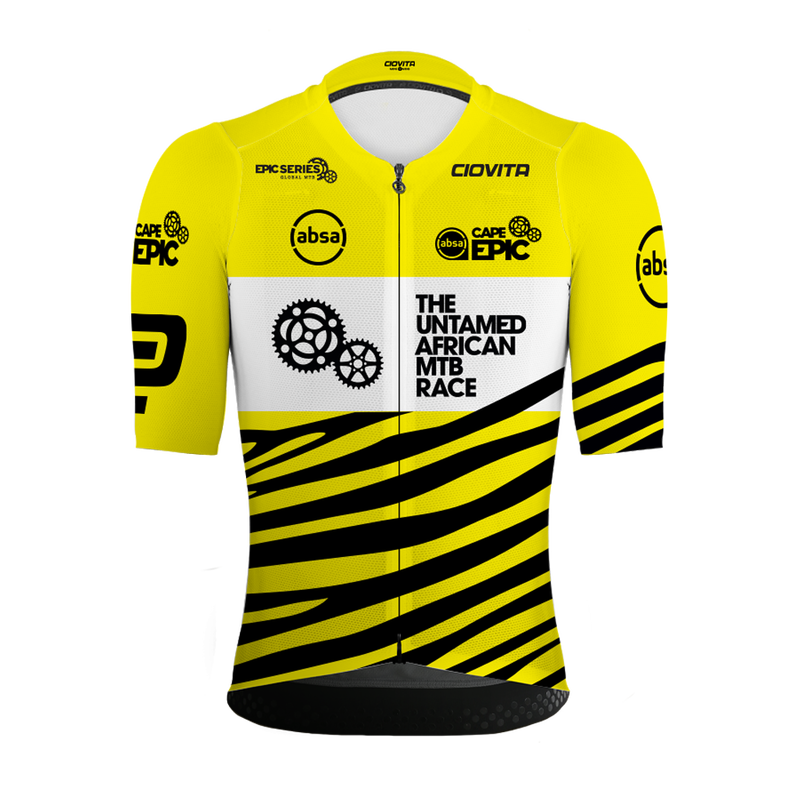
MEN
Both riders are male and have a valid UCI Elite License.

CM.com Women
Both riders are female and have a valid UCI Elite License.

AMATEUR
Both riders are male/female and are 19 years or older.
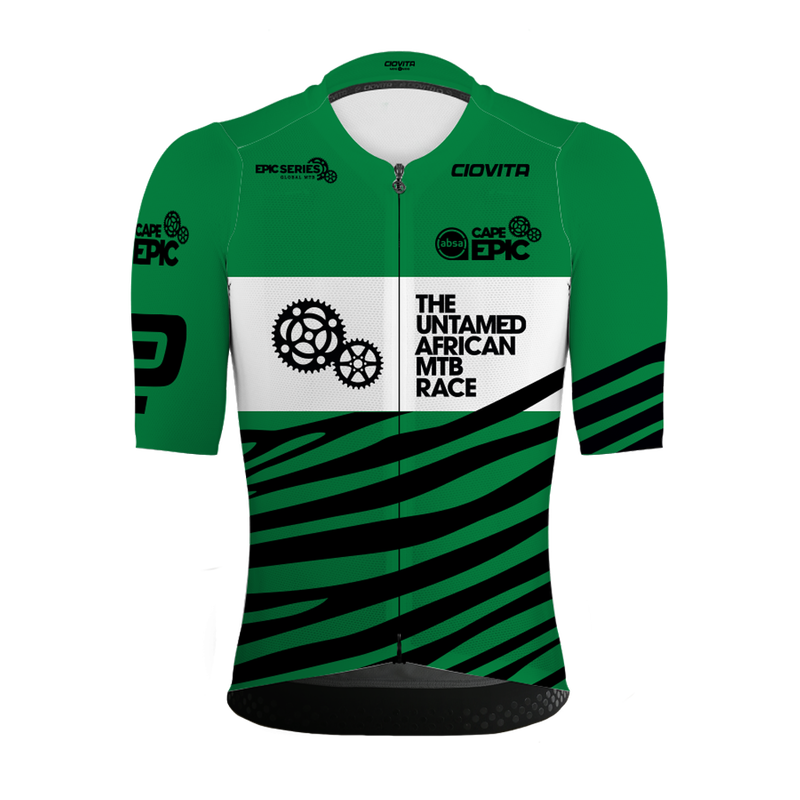
Toyota Mixed
One rider is male and one rider is female.

NTT MASTERS
Both riders are 40 years or older on 31 December of the year of the race.
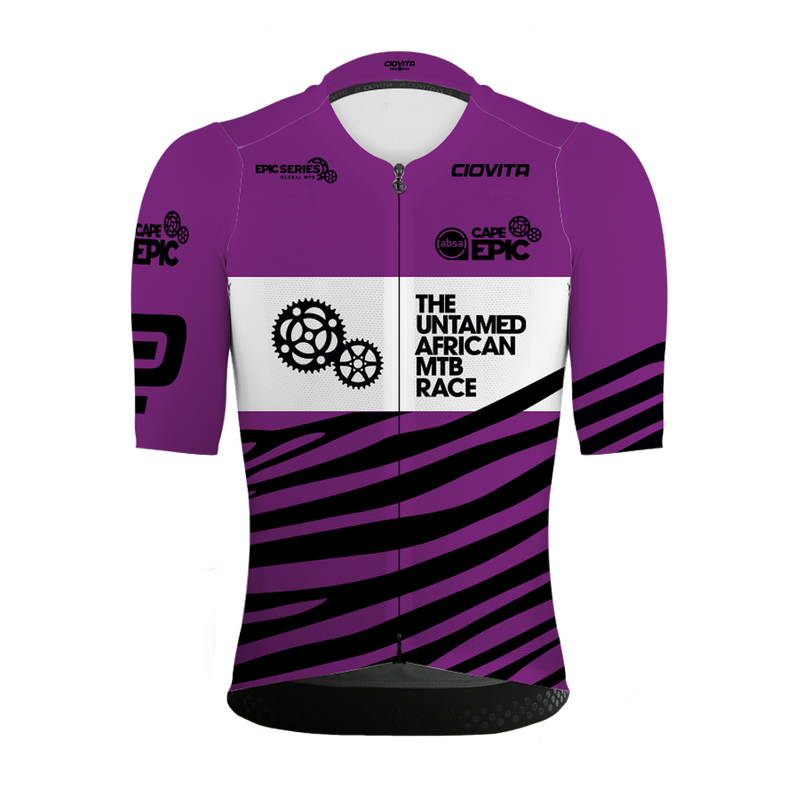
GRAND MASTERS
Both riders are 50 years or older on 31 December of the year of the race.

GREAT GRAND MASTERS
Both riders are 60 years or older on 31 December of the year of the race.
special jerseys

Absa African Men
Highest placed men’s team from Africa

Absa African Women
Highest placed women’s team from Africa

EXXARO
Top historically disadvantaged South African team where both riders are under the age of 26
other JERSEYS
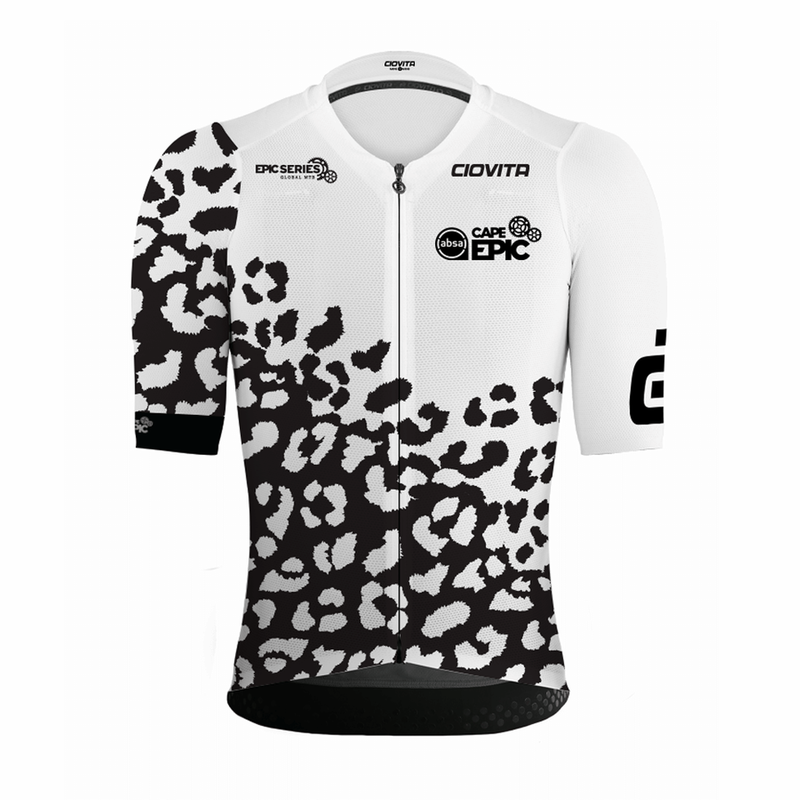
LEOPARD
Given to UCI-registered riders if their partner drops out.
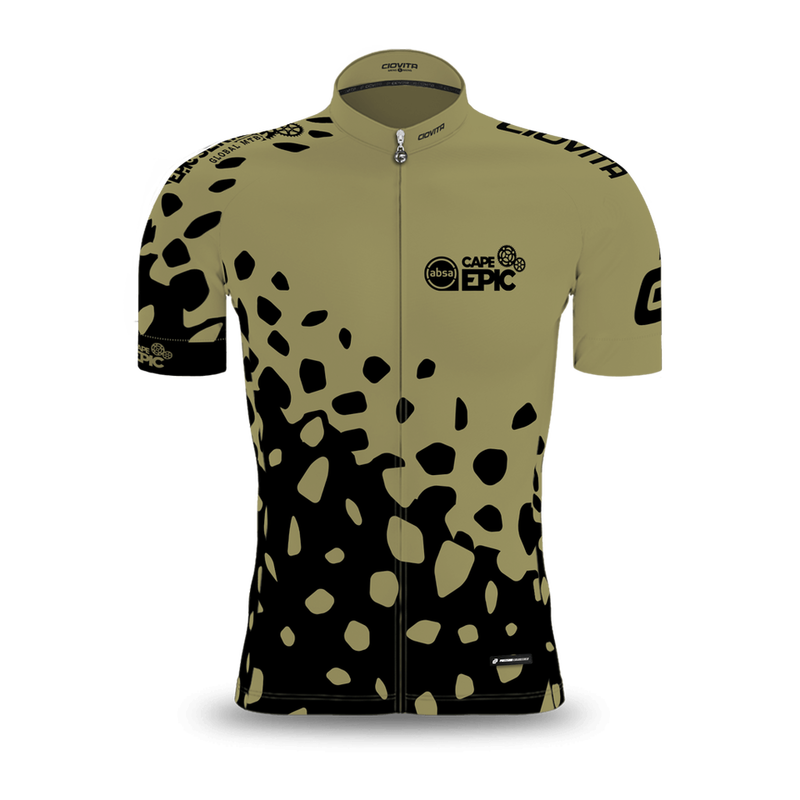
HYENA
Worn by race sweeps
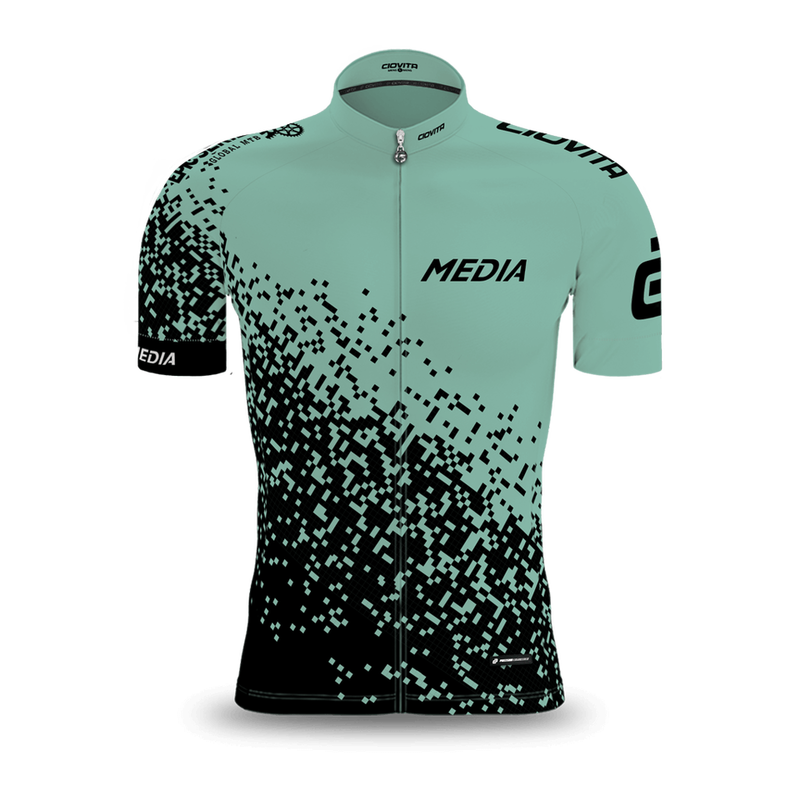
MEDIA
Worn by media e-bike riders
THE TROPHIES
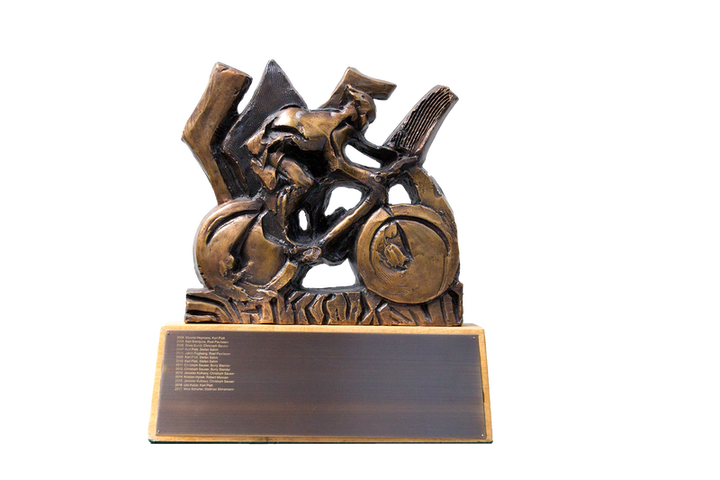
MEN’S CATEGORY TROPHY
The Men’s trophy was created by celebrated South African artist Niël Jonker and awarded to the winning team for the first time in 2010. Niël works in several mediums and is held in high regard internationally for his painting, charcoal drawing and bronze sculptures. For the trophy Niël took his inspiration from the original Absa Cape Epic logo, which included Zebra stripes, a mountain biker and the colours of the South African flag. The sculpture is cast in solid bronze and mounted on a block of Assegai timber, the trophy stands 37cm high and weighs 8,2kgs.

CM.com Women’s Category TROPHY
The trophy includes bronze stones which represent the rough and unforgiving terrain that riders must overcome. It includes two stones placed on top of each other, symbolising teamwork between the teams of two riders. The shape of the cast bronze ‘branches’ curling around the stones is based on the structure of an adrenaline molecule, emphasising the endurance aspect of the Absa Cape Epic. The sculpture is mounted on wood from an African fig tree: in African mythology figs and fig trees are symbols of fertility and femininity. The cm.com women’s trophy is the first trophy to be designed by a female artist and the foundry in which it was cast is also exclusively staffed by women artists and artisans.
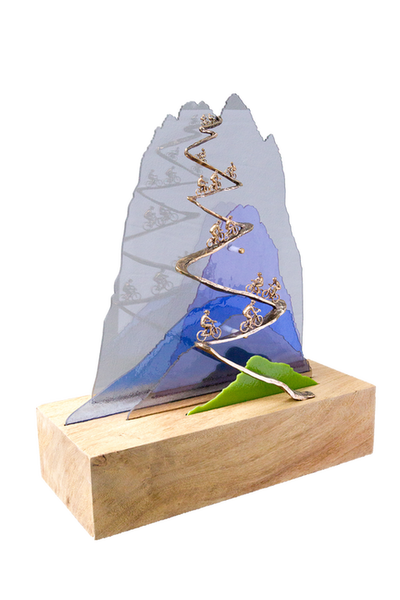
Toyota Mixed Category trophy
Rina Stutzer found inspiration for her creation from her personal relationship with the Absa Cape Epic. Her design has focused on the ascent, an aspect that, for many, is the essence of the race. It is the climb that challenges the athletes, taking them to a world unseen to complete a journey of self-discovery and mutual awareness. As the Toyota Mixed category is one in which team members must find the perfect balance and harmony between strengths and weaknesses, both mental and physical, Stutzer has depicted the poetic beauty of a winding, steep incline with a thin sliver of a path that is dotted with riders winding their way to the top.
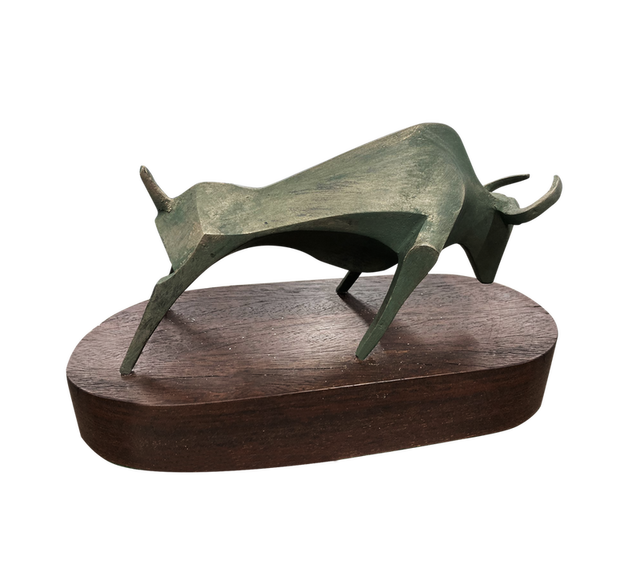
AMATEUR CATEGORY TROPHY
The Absa Cape Epic Amateur category trophy has been designed by Theophelus Rikhotso, who was born in a rural village in Limpopo. Rikhotso’ inspiration for the trophy centers around his observations of nature, especially birds and animals; the Wildebeest was chosen as the silhouette for the trophy due to its symbolic ties to endurance and adaptation, two characteristics required by teams looking to lift the Amateur trophy above their heads at the Absa Cape Epic Grand Finale.
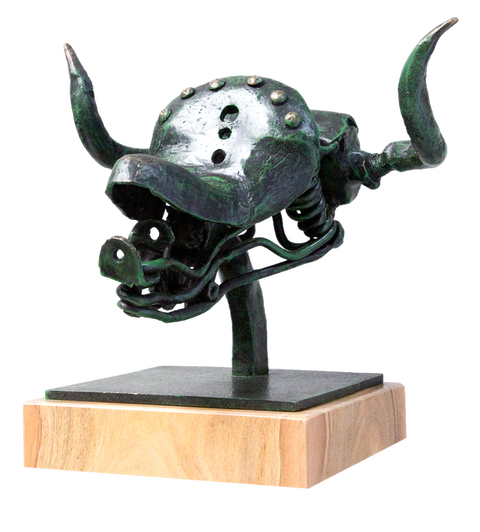
MASTERS
CATEGORY TROPHY
Willie Bester was born in Montagu where he first showed his artistic talent as a 10-year-old when designing elaborate wire cars. Bester, whose work has demonstrated expressions of the struggle for freedom in South Africa, is an internationally renowned artist with a reputation for his innovative use of a vast array of materials found in scrap yards and around.
He has taken his inspiration for the Masters trophy from Picasso, the legendary Spanish artist. Bester has breathed new life into a humble bicycle saddle, bestowing it with character and strength, embracing the untamed ethos of the Absa Cape Epic.
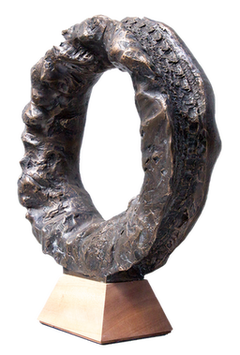
GRAND MASTERS
CATEGORY TROPHY
Sculptor Guy du Toit’s inspiration when creating the trophy for the winners of the Grand Masters category was to envelope himself in the ethos and experience of riders over 50 years old: mastery, wisdom, dignity and intellect and inner strength.
The trophy is a wheel or a circle with a cycle spoor running deep on the outside, with a texture that celebrates the Western Cape landscape. The choice of the circle was informed by the fact that the dot is one of the most potent design elements and is endless, which is suggestive of the Grand Master’s journey. The circle functions as a lens, looking both back at that which has gone before and that which is to come.
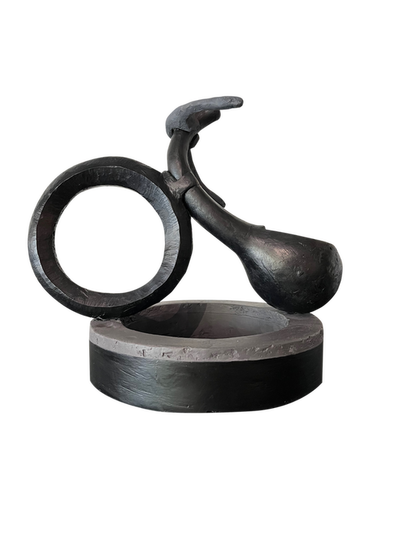
The Great Grand Masters Trophy
The Great Grand Masters trophy has been designed and made by artist Kgaogelo Mashilo, a.k.a Cow Mash. Her inspiration for the trophy was drawn from the fact that it is a blessing to be in good health and to choose a lifestyle of health and activity at 60 years and above. To honour this lifestyle and the teams who display replenished health and competitiveness, Cow Mash has used an African calabash fused together with a futuristic bicycle. The joining of an Ancient African drinking vessel and a futuristic mode of transport blends the past and the future together and is a fitting prize for teams who have years of experience to draw on to tackle the Untamed African MTB Race long into the future.
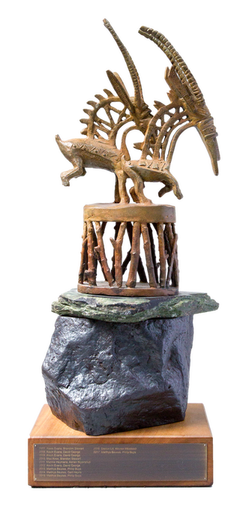
THE BURRY STANDER MEMORIAL TROPHY
The Burry Stander Memorial trophy, created in 2013, is awarded to the winners of the Absa African Special Jersey for the highest placed men’s team from the continent.
It was created by renowned local artist Angus Taylor in dedication to Burry Stander, the former U23 World Champion, World Cup winner and first South African winner of the Absa Cape Epic. Stander was tragically killed in a collision with a mini bus while training on 3 January 2013. Angus used exclusively South African materials in the design of the trophy. It was inspired by a Chiwara, a styled wood-carved antelope used in African ceremonies, which in this case is sculpted out of haematite from Thabazimbi. The Chiwara is depicted running on the base’s rugged Matumi wood, sourced from South African watercourses.

HANNELE STEYN TROPHY
The Hannele Steyn Trophy was created in 2017 and has been awarded to the first all-African women’s team to cross the finish line as of the 2018 Absa Cape Epic.
Pretoria artist Kgaogelo Mashilo’s
trophy will herald a newly-established special jersey race that will promote and encourage the development and standard of African cycling. The Epic has been at the forefront of advancing equality for women’s cycling, having set new standards. Mashilo has incorporated the Adinkra symbol of the Wawa Aba, the seed from wawa tree from West Africa, as the core of the bronze trophy, which will be set on hardwood. The Wawa Aba seed is extremely hard, and in Akan culture the symbol identifies someone who is strong and tough, and inspires them to persevere through hardship.

EXXARO TROPHY
Lwandiso Njara, protégé of acclaimed sculptor Angus Taylor, designed the trophy to resemble the transformation and progression of two ordinary young potential stars from the township into dedicated, victorious, mountain bikers.
All the materials used in the sculpture were sourced from various Southern African Exxaro mines and include coal, iron ore and titanium.
The result is a trophy that weighs in at 9,4kgs and which often gives the winning riders a surprise as they hoist it above their heads at prize giving.

LAST LION TROPHY
Dylan Lewis has created a work that captures the noble majesty and regal bearing of the king of Africa’s big cats for the Last Lion trophy. His sculpture, which will be presented to the last rider to have finished every Absa Cape Epic, exudes the respect and strength that the competitors and the lion have in common, celebrating their legendary status. Lewis takes wildlife as his inspiration, and has focussed on the cat in his work, imbuing his bronze sculptures with power and movement, using texture to represent Africa’s primeval, rugged and beautiful landscapes and the ancient, unforgettable rhythms of the continent. For the Last Lion, Lewis has sculpted a lion lying on a rock as he looks across the plains, king of all he surveys.